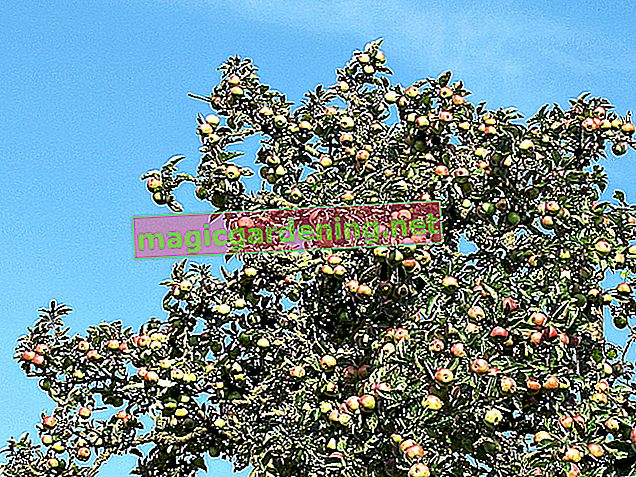
Why apple trees are grafted
In principle, apple seedlings grown from pips can also produce a good yield of large and aromatic fruits as a fully grown tree. However, with these seedlings there is always a certain uncertainty about the exact variety, as the pollination of the apple blossoms with foreign pollen also allows unknown genetic components to enter the seeds. A refinement by grafting or inoculating offers the advantage, in addition to the use of a securely determinable branch, that a certain stem height can also be determined by applying it to a growth base.
also read
- The apple tree as a hedge in the garden
- Keep a tree diary for an apple tree
- The apple tree in winter
Hard times for high tribes
Generally, nowadays, decreasing proportions of standard trees are produced in tree nurseries. This is not least due to the fact that many private houses only have small garden areas. In addition, lower trunk forms such as bush trees or half-trunks can be harvested more easily and quickly. Last but not least, pruning tall trees requires a longer ladder and a certain amount of daring on the part of the gardener.
Arguments for a high trunk as an apple tree in the garden
Small fruit trees in the following forms predominate in many gardens today, for example as:
- Espalier tree
- Columnar apple
- Apple-tree-in-the-pot
However, due to their much smaller tree crown, these tree forms also bring a much lower yield of fruit. In addition, in gardens that are bordered by high and windproof hedges, an advantage of standard trees should be pointed out. If the treetop is not in the slipstream of the hedge, but above it, this is an optimal protection against powdery mildew, various fungal diseases and other diseases. Due to the wind-related ventilation of the treetop, the leaves dry out more quickly after the rainy season.
Tips & Tricks
Especially with the fruit trees used for the production of juice and must, trees with grafting on high trunk are still in use today. On the one hand, these trees with their soaring crown shape can also find their place in cultivated meadows and fields, on the other hand, the fruits for this type of use can be shaken off the tree and picked up from the ground.








